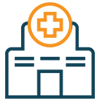
|
|||||||||||||||||||||||||||||||

Life-sciences has been one of the pioneering industries in adopting high-end analytics for research and development. The adoption of this competency is, in fact, reaching beyond the research division into day-to-day functions. Financial management, patient administration, healthcare practitioners’ performance management, and program’ holistic supervision within hospitals are a few out of many.
Some of the key reasons this industry has been adopting healthcare data analytics is to facilitate diagnosis, practice ‘prevention is better cure’ mantra, and reduce frauds. Additionally, business analytics also helps healthcare organizations control costs by identifying and mitigating unforeseen changes in resources, contracts, and quality measures. Analytics enables them to quickly identify and executes methods that improve the clinical outcomes of the patients.
Healthcare analytics has improved the way this industry operates, and with the ability to transform the way medicine is being practiced for years, analytics has resulted in improved health and reduced diseases, providing more satisfied patients and physicians.
Also, with competitor analysis being expensive and uncertain with results, trade-off this aspect by opting robust analytics for health services management.

Drug companies commercially licensed to research, develop, market, and distribute drugs most commonly in the context of healthcare. They may also deal with generic or brand medication and medical devices.

Institutions such as hospitals and clinics or individuals such as doctors, nurses, allied health professional, or community health worker providing preventive, curative, and other care services to individuals, families, and communities.

Healthcare institutions provide surgical and medical treatment and nursing care for sick and injured individuals. They have a range of departments and specialty units for different functional systems of the body.
Sales in pharma industries follows typical patterns, and it is often the intermediary, that is, the medical practitioner to whom sales are made, rather than the end consumers—the patients. This is the model adopted across the globe for most of the prescription drugs. However, some generic medicines follow the standard practice of selling directly to consumers.
In both cases, it is critical to measure the sales process and results to maximize the output and ensure that key business objectives are met. For pharma, that is a large capex industry, having a healthy sales function is significant to growth and survival of the brand.
Some of the metrics you get covered under this function are:
This function is more relevant to Pharma companies operating in a market where the medical cost is paid through insurance programs rather than by individuals. Sometimes, there is a hybrid model of payment for prescriptions. In the former case, the pharma companies also need to manage their relationship with the insurance companies to meet their sales and business objectives. Claims management functions help companies to manage their accounts and relationships through the following metrics:
This function augments claims management team to understand the behavior of payers towards the prescriptions in depth. The process of payment for medication is complex in some markets due to multiple schemes and regulations governing it. Hence, understanding the rejections and reversals helps the brands better position themselves in the market and optimize their relationship with the payers. The insights availed by the healthcare solutions in this area involves the following statistics:
Healthcare service providers run several programs targeting specific segments within their market. These could be programs like IVF treatments, stem cell treatment and storage, rehabilitation treatments, or corporate health check-up programs. The analysis of such programs’ performance helps service providers calculate the effectiveness of their programs. Thus they can fine-tune the rough aspects of the program to meet their internal objectives. Some of the prime metrics include:
Hospitals today are high in demand to provide world-class healthcare and to ensure the costs are managed and optimized. This ensures that healthcare remains affordable to the masses. No wonder, hospital management has become a separate discipline, showing the complexity and professionalism required to manage the day-to-day functions. Similar to other businesses, hospitals have different moving parts, which need to be orchestrated to ensure that world-class care is delivered all the time and on time. Some of the KPIs we offer in this niche through customized dashboards are:
We are a team of cross function and cross industry experts who build, test, and deploy analytical solutions to assist organisations in increasing process efficiency and reducing business risks.